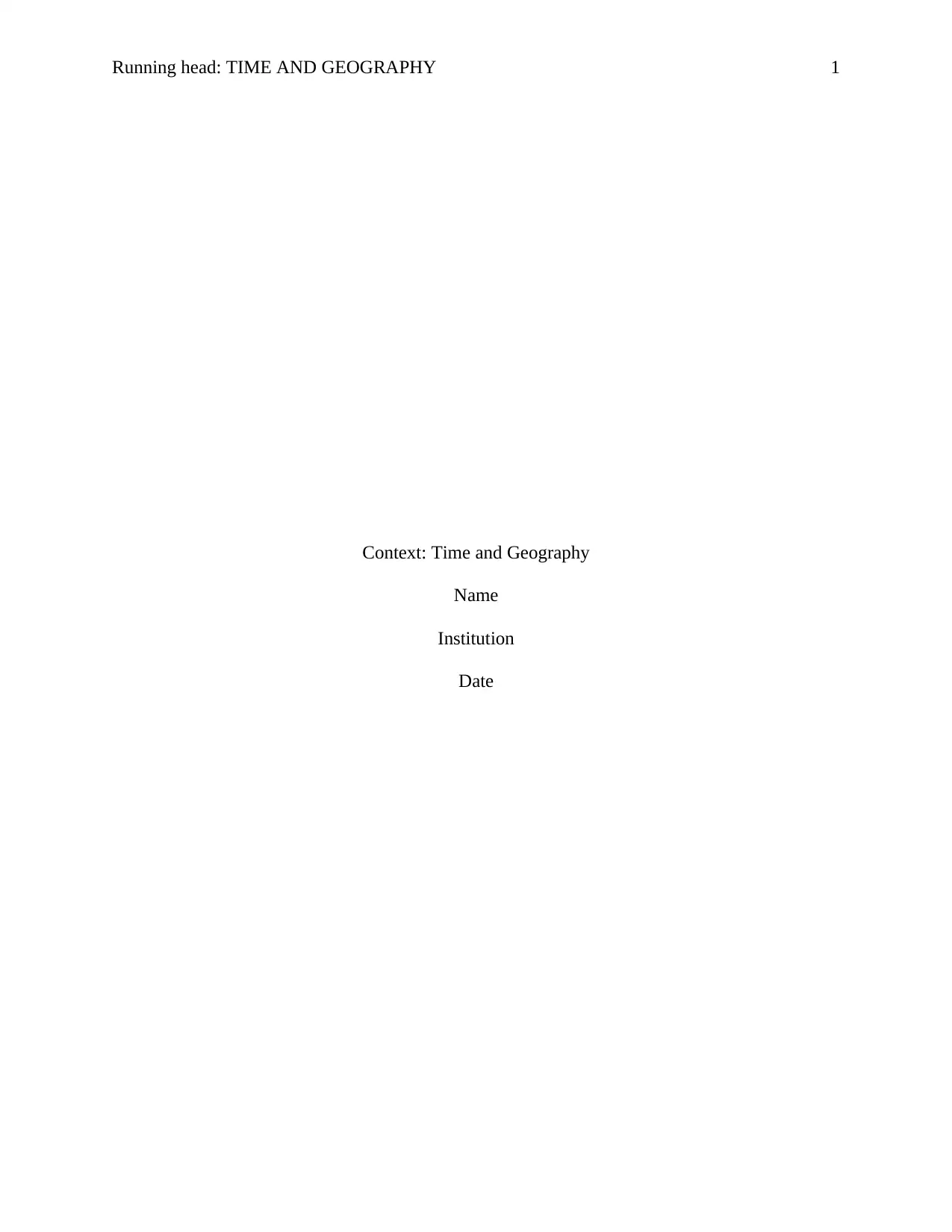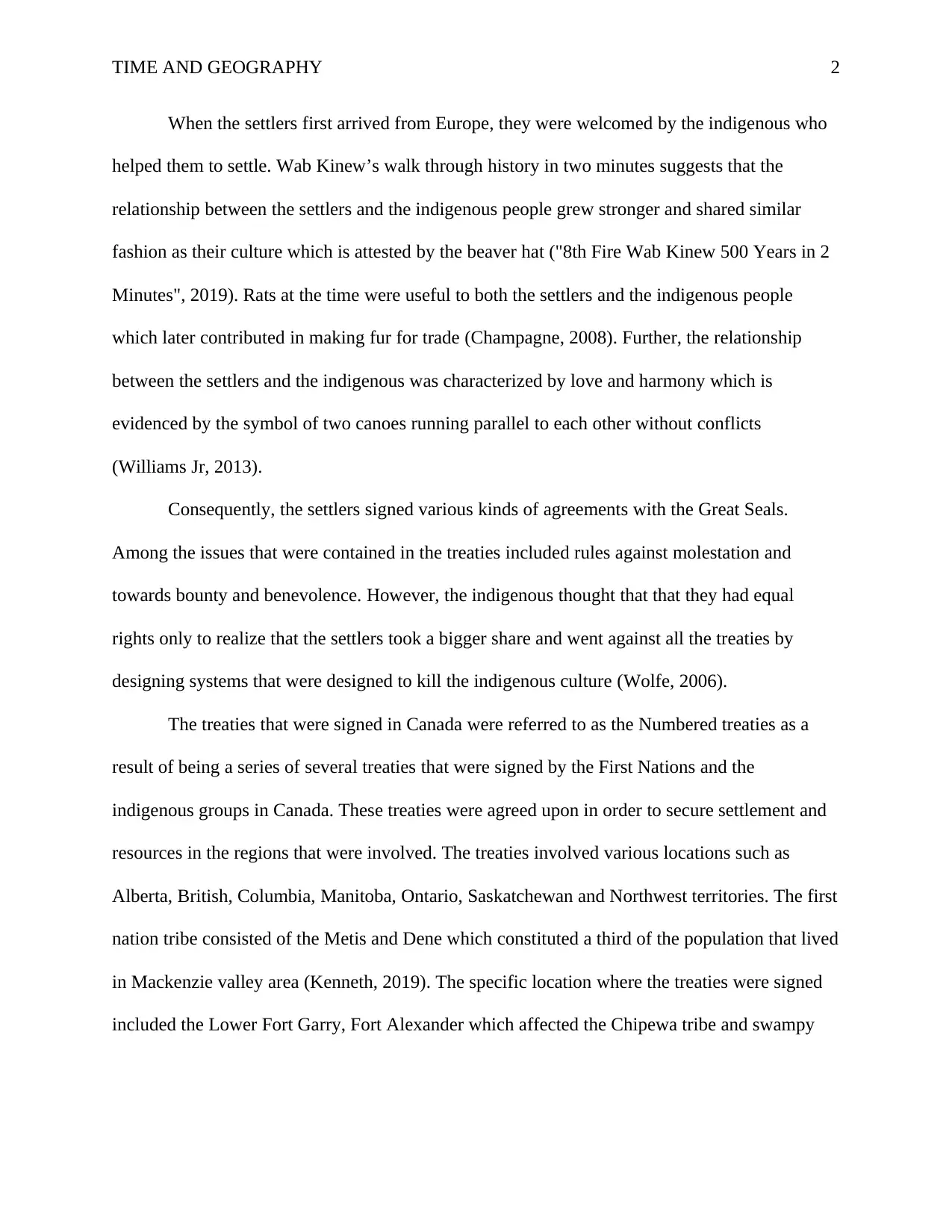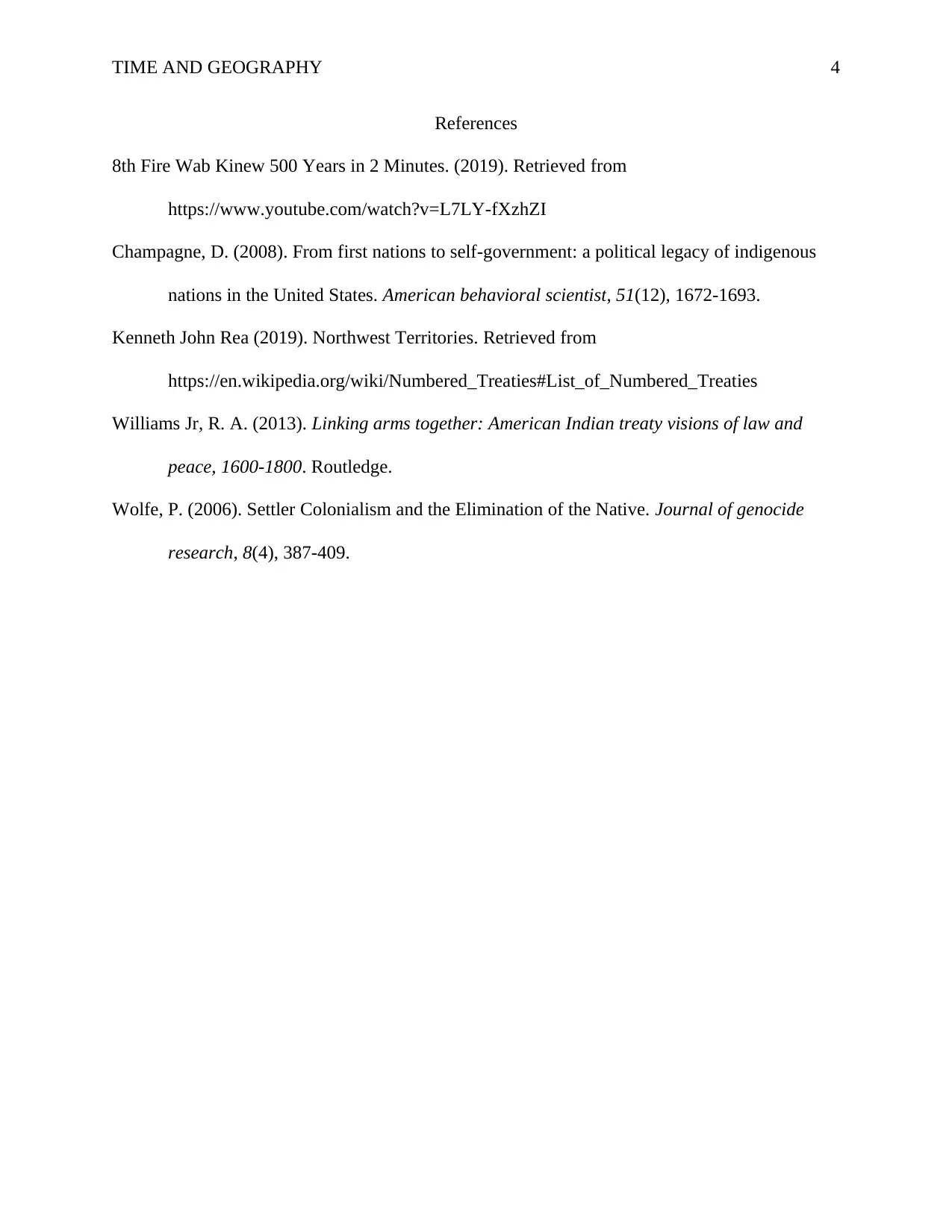The Impact of Time and Geography on Settler-Indigenous Treaties
VerifiedAdded on 2023/04/25
|4
|539
|225
Essay
AI Summary
This essay examines the historical relationship between European settlers and indigenous peoples in Canada, focusing on the evolution of their interactions from initial cooperation to conflict. It references Wab Kinew's depiction of shared cultural elements, such as the beaver hat, and the early economic cooperation exemplified by the fur trade. The essay highlights the signing of the Numbered Treaties, intended to establish rules of conduct and resource sharing, but ultimately leading to the exploitation of indigenous populations and the suppression of their culture. The treaties, involving various First Nations groups like the Metis and Dene across regions including Alberta, Manitoba, and Saskatchewan, aimed to secure settlement and resources, but resulted in unequal outcomes and cultural destruction for the indigenous communities. Desklib offers a variety of resources, including essays and solved assignments, to aid students in their studies.
1 out of 4





![[object Object]](/_next/static/media/star-bottom.7253800d.svg)